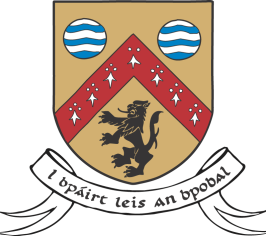History
The Local Government (Ireland) Act, 1898 provided the legal framework for the introduction of the Local Government System as we know it. Local Authorities including the County Council for Laois were established to provide and regulate a range of public services.
The role and powers of Local Government have evolved and expanded over the years to cope with the changing needs of society. In the early decades following the establishment of the Local Government System, the core activities rotated around sanitary, public health and roads functions. In order to cope with the demands of the developing society the activities were expanded in particular from the 1960’s onwards.
Great investment and regulation were concentrated on the provision of housing, water supplies, sewerage treatment, etc. while simultaneously Local Government was also vested with responsibility for planning and development of the physical environment. The health function was transferred in 1970 with the establishment of the Regional Health Boards.
The role of Local Government in the provision of recreational amenities, for example, libraries, sports facilities, and parks, and so forth has also been very important and is becoming increasingly so in the context of current social demands.
The first council meeting in Laois
The first meeting of Laois County Council took place on Saturday the 22nd April, 1899.
There were no computers, mobile phones, projectors or printers. Yet many of the issues faced by that particular Council were the same as those that face the Council today. The meeting took place in the Grand Jury Room of Maryborough Courthouse in Portlaoise. Proceedings began about half an hour after the appointed starting time of 11.30am. The meeting was conducted in an efficient and workmanlike fashion. The historic meeting set an exemplary tone for Local Government administration in the County for the years ahead.
Politics and matters of the Government were strictly a male domain at the time. These were the days before women’s suffrage and much longer still before a mention of women’s liberation. All thirty-one Members present at the first meeting were men. The pendulum has swung over the years in favour of women -albeit slowly it must be admitted. Mary Wheatley, in 1985, became the first woman to be elected to Laois County Council. In the Local Government elections in 2004 of the twenty-five Members elected only two were women.
On April 22nd 1899 there was a full attendance as Returning Officer and Sub-Sheriff for the Queens County, Mr. Richard Bull, got proceedings underway. Despite his name the convenor allowed “no bull” whatsoever to diminish the importance of the occasion.
Both the Leinster Express and the Nationalist & Leinster Times of the 29th April 1899 recorded the proceedings of that first meeting of the Council.
The report in The Nationalist read as follows. “The first meeting of Queens County Council on Saturday last was a very respected and model business – like gathering and its proceedings bore very favourable contrast with the proceedings of the predecessors, the Grand Jury. The troublesome question of co-option and the Chairmanship were disposed of without any of that friction which was prophesied for us by the Unionist cranks, and although the contest for the Chair was a very close one it was concluded with the best temper.”
The report in the Leinster Express read as follows. “The proceedings were conducted in an expeditious and business-like manner, under the Chairmanship of Mr. Meehan who proved his efficiency for the position assigned to him by the Council by the able manner in which he discharged his duties.”
The minutes of the first meeting
The Minutes of the first meeting record the name of those present as read out by Captain Henry Despard, Secretary.
- Abbeyleix – William Phelan
- Arles – John Byrne
- Ballinakill – Patrick Brennan
- Ballybrittas – Denis Boland
- Borris-in-Ossory – Laurence Thomas Kelly
- Castletown – Arthur McMahon
- Clonaslee – John Treacy
- Coolrain – Michael Fitzpatrick
- Cullenagh – James MacMahon
- Donaghore – Bernard Edward Barnaby
- Durrow – Patrick O’Flanagan
- Emo – John Williams
- Luggancurren – Thomas Breen
- Maryborough – Patrick A. Meehan
- Mountmellick – William McEvoy
- Mountrath – John Dowling
- Newtown – Patrick Brennan
- O’Moore’s Forest – Patrick Doran
- Portarlington South – Charles Bannon
- Rathdowney – Daniel Quigley
- Stradbally – Denis Shaughnessey
- Tinnahinch – William Dunne
- Present also were the Chairmen of the five Rural District Councils:
- Abbeyleix – Arthur McMahon
- Athy No. 2 – Thomas Timmins
- Carlow No. 2 – Matthias McWey
- Mountmellick – James Dunne
- Roscrea No.3 – Thomas Lowry
Our coat of arms
The Chief Herald of Ireland assigned a coat of arms to Laois County Council on the 16th of June 1998. The Themes incorporated in the shield are, in the words of the Chief Herald:
“..or on a chevron gules between in chief two fountains and in base a Lion rampant sable seven ermine spots argent with the motto: Í bpáirt Leis an bpobal.”
The chevronels or inverted V’s rising towards the top of the shield represent the Slieve Bloom Mountains and the Rock of Dunamaise and are charged with seven ermine spots representing the seven leading families or “tribes” of Laois. The heraldic fountains of white and blue represent the source and beginning of the rivers Nore and Barrow. The fountains are also a mark of the county, showing its colours of white and blue. The lion rampant in base is that of Ó Mordha, Kings of Laois. The background is gold, the colour of the Ó Mordha lion and stars.
Our crest

